Wisconsin’s Kinnickinnic River Trail
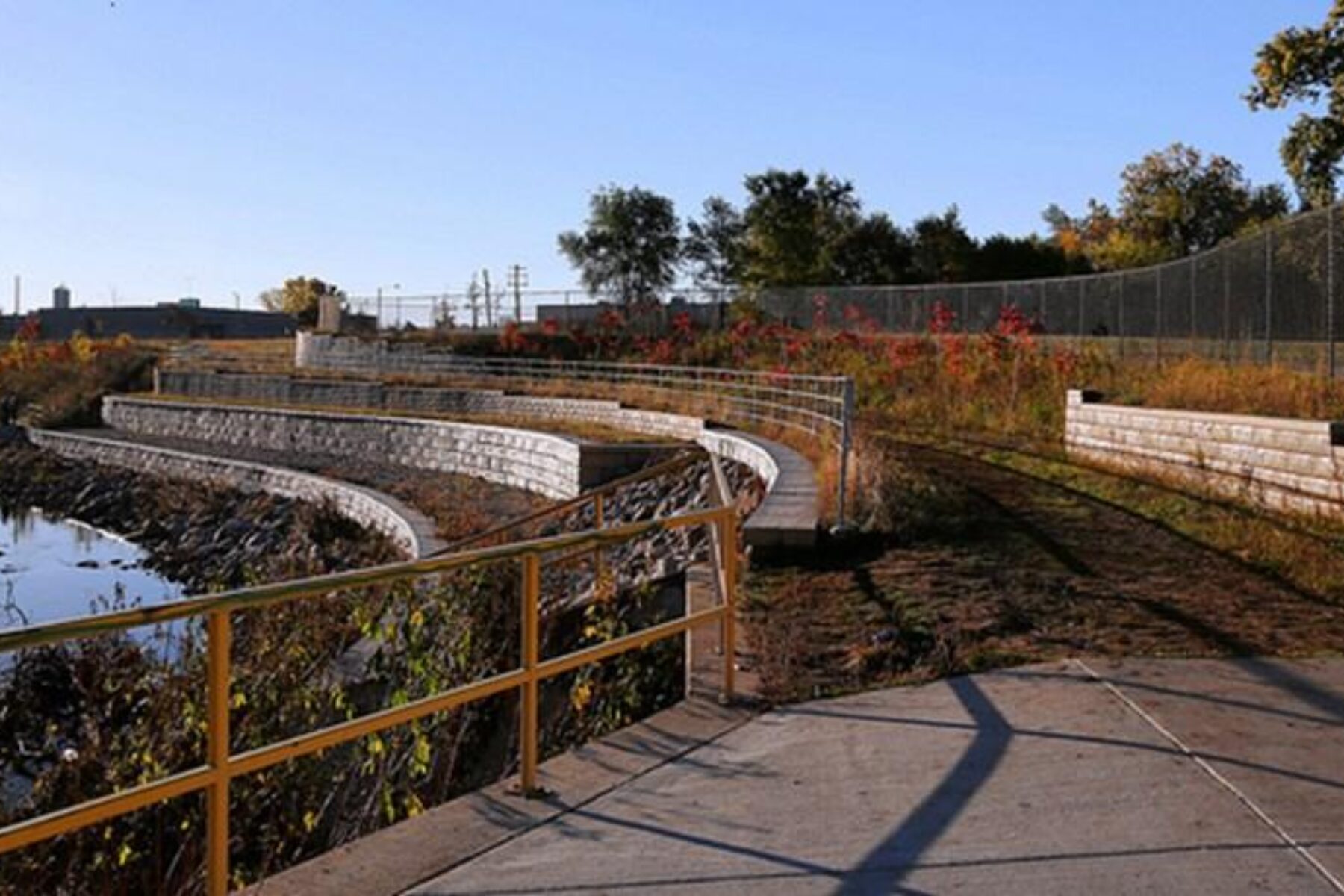
Trail of the Month: January 2015
“It’s just the beginning of something that will be even more wonderful.”
The story of Milwaukee’s Kinnickinnic River Trail is the story of its eponymous river; paralleling each other through the city’s south side, the fate of the two is intimately intertwined. The KK River Trail, as it’s known locally, is also referred to as the “lost river.” Lined with concrete in the 1960s in an effort to improve floodwater flows, the channel deteriorated over time, becoming contaminated, filled with trash and defaced with graffiti. What was once a vibrant waterway along a busy harbor of Lake Michigan was reduced to nothing more than an ugly and forgotten drainage ditch.
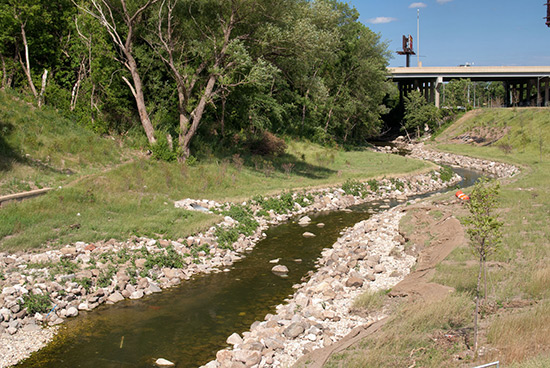
A few years ago, a plan was put in motion to change the course of its future. The Milwaukee Metropolitan Sewerage District (MMSD) would widen the river from 50 feet to 200 feet to improve its ability to channel floodwater, replace the concrete with river stone and add natural vegetation to restore the river’s allure for both wildlife and people. Although only 1,000 feet of the watercourse have been improved so far, the difference is astonishing. Its once steep slopes are now beautifully tiered and accessible, and trout and salmon can be seen swimming in its waters. For the remainder of the river project, about 75 percent of the private property needed for completion has been acquired.
“We want to make this corridor into an asset for the community, rather than this open sewer,” says Patrick Elliott, MMSD’s senior project manager. “It’s an urban watershed, so it’s struggled, but the river is definitely on its way to getting better.”
In tandem with these efforts, an existing rail-trail adjacent to the river project will be extended westward along the river to provide better access to the newly revitalized waterway, and to connect parks, businesses and schools throughout the neighborhood. Elliott says MMSD was already planning to create a basic, unpaved trail along the river for maintenance and upkeep, so it was a natural fit to improve on that idea and create a paved trail that the public could use as well.
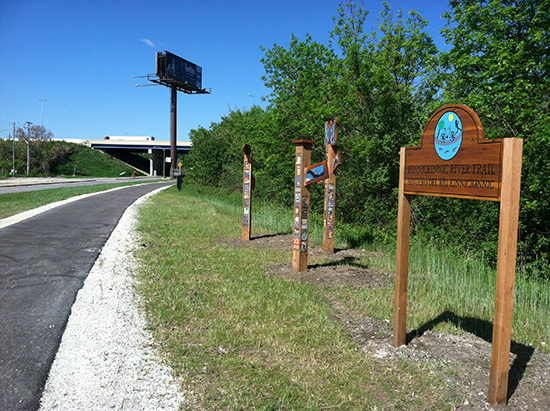
“Now you see people actually using the river,” he says. “It’s encouraging to see families getting out there, even doing some fishing. You don’t see that on the part that’s still concrete on the other side of the bridge.”
The first segment of the KK River Trail opened in 2013, and while just a little more than two miles have been completed, its benefits are still rippling through the adjacent Lincoln Village and Bay View neighborhoods.
“The trail is a big asset in an extremely dense, urban neighborhood,” says Kristin Bennett, Milwaukee’s bicycle and pedestrian transportation coordinator. “There aren’t large swaths of open space, so it creates this recreational opportunity right in the heart of all these people.”
Elliott says residents have rallied around the project, recalling one particular river clean-up event this past October. “It was 30 degrees out and rainy, a miserable day, but it was packed! The community involvement in this area is really great.”
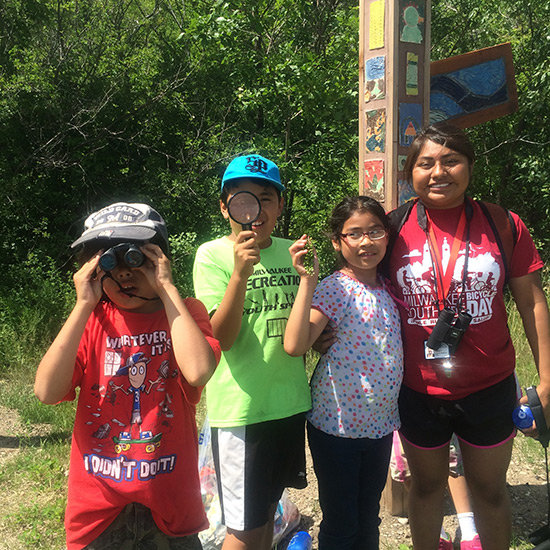
Recognizing the connection between the health of the river and the health of the community, the Sixteenth Street Community Health Centers (SSCHC) became a key partner in the project early on. The healthcare provider, serving the city’s south side in an area where 80 percent of the population is Latino, has been working to build awareness of the river and trail among residents and foster educational programming and volunteering efforts. The group worked with students from local schools to create public art and a butterfly garden along the trail, as well as trail signage in both English and Spanish.
“The trail was a new space for the community,” says Iris Gonzalez, SSCHC’s community engagement specialist. “This past year, we started a weekly summer camp program along the trail where participants learned biking skills and explored the natural surroundings in this urban environment. Part of the trail is really wooded.”
The public art that the students created included colorful tiles that lined three wooden pillars carrying a symbolic message. “This river is undergoing transformation, and the woods and the neighborhood are undergoing transformation as well, so they used the imagery of a caterpillar and a butterfly to represent that,” says Gonzalez.
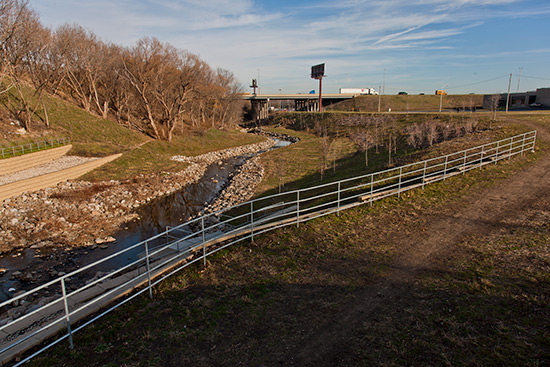
Plans are underway to add another two miles to the trail, nearly doubling its length as it continues west along the ever-improving river from 6th Street to 27th Street. This phase of the project is in the design and engineering stage with construction anticipated to begin in 2018 and end in 2022.
“Opening up access in these neighborhoods to new recreational opportunities is challenging because we’re so land-locked,” says Ben Gramling, director of the environmental health department for SSCHC. “This trail will open up more territory for people to lead more active lifestyles and provide access to the Kinnickinnic River Parkway and Jackson Park, a jewel in Milwaukee’s park system.”
“It’s all right there,” says Bennett. “The potential for the trail is astronomical because of all the development happening around it.”
The trail’s north end—where it currently ends just two miles shy of the downtown core and the city’s famed Hank Aaron State Trail—already caters to a growing center of activity. Last fall, the University of Wisconsin–Milwaukee opened a new state-of-the-art research facility for its School of Freshwater Sciences near the city’s lakefront, about a block from the trail. In that same area, a new mixed-use development with residences, office space and a grocery store is anticipated to open along Greenfield Avenue in 2016. And a stone’s throw away is the Oak Leaf Trail, an extensive and primarily on-road bicycling network of more than 100 miles that puts many areas of the city within reach.
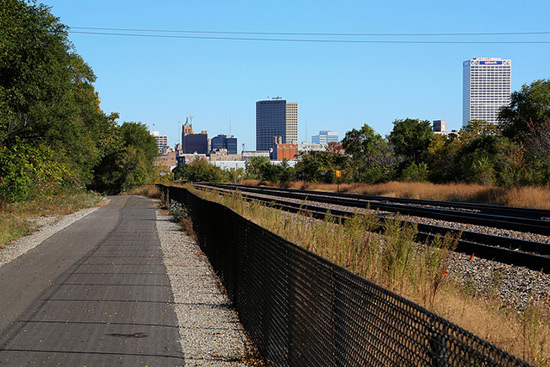
“It’s all right there,” says Bennett. “The potential for the trail is astronomical because of all the development happening around it.”
With these connections, the KK River Trail ties into an already vast and growing trail network; Milwaukee is serving as a hub of potential with trail spokes stretching outward north toward Sheboygan, south to Racine and Chicago, and westward to Madison, La Crosse and Minneapolis’ doorstep.
Perhaps Gonzalez sums up the evolving trail best by saying, “It’s just the beginning of something that will be even more wonderful.”

Donate
Everyone deserves access to safe ways to walk, bike, and be active outdoors.
